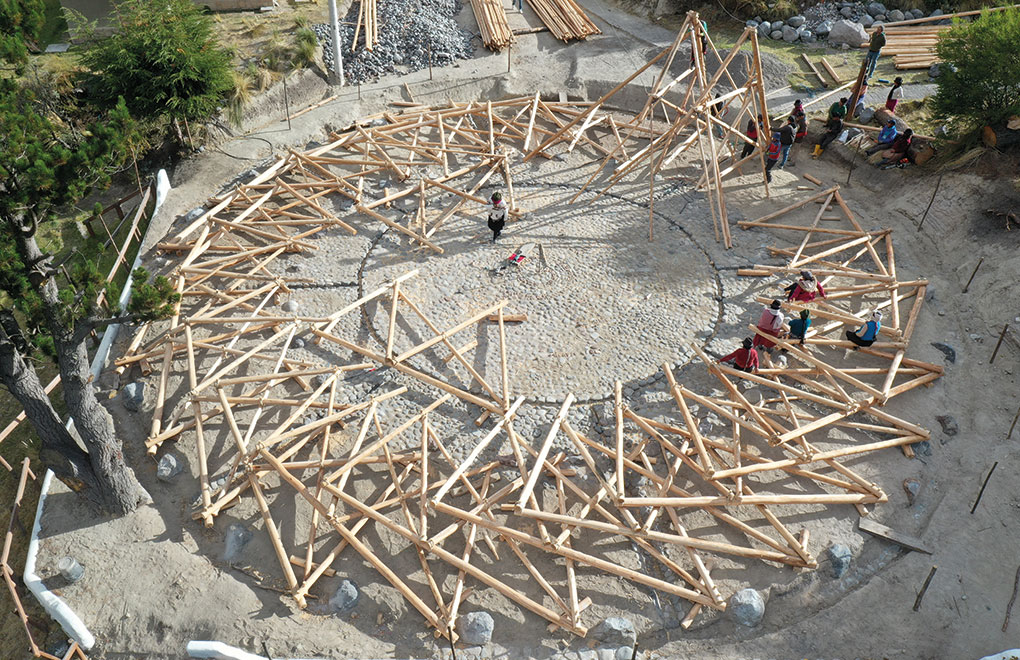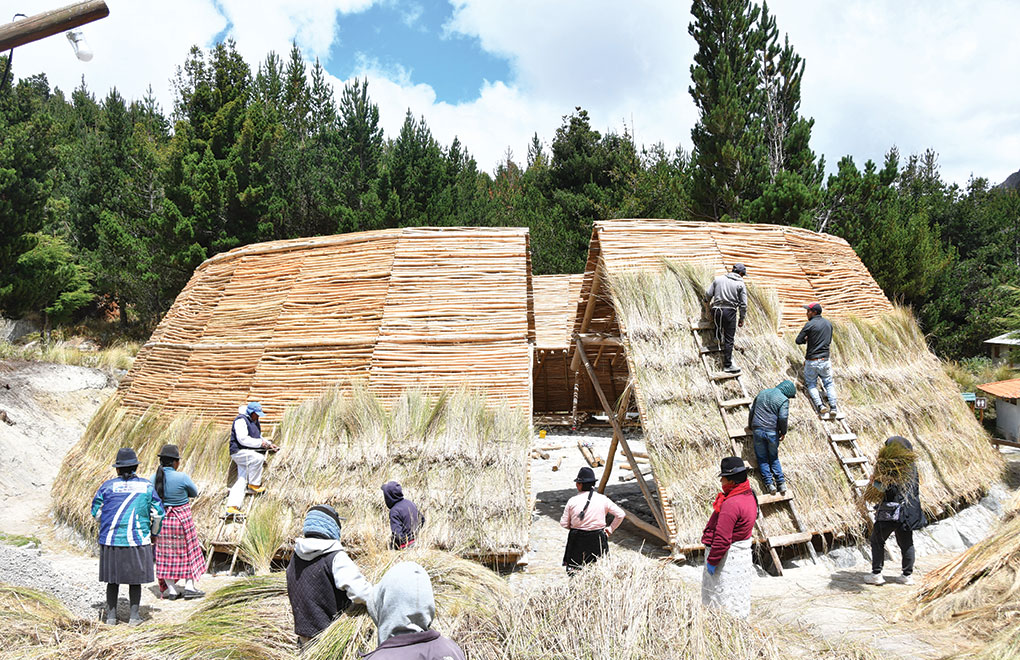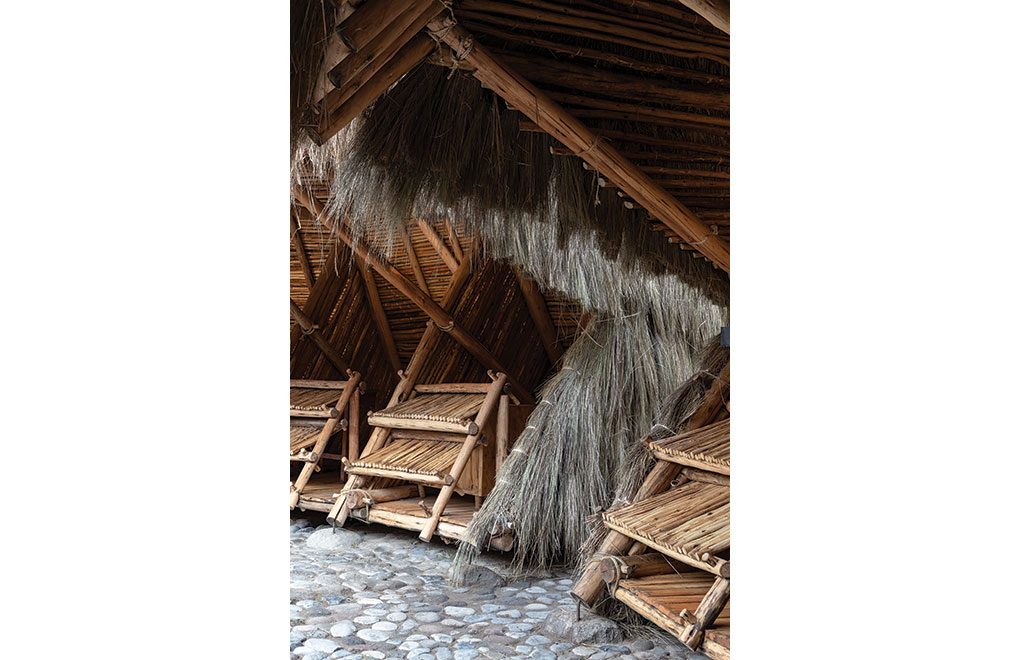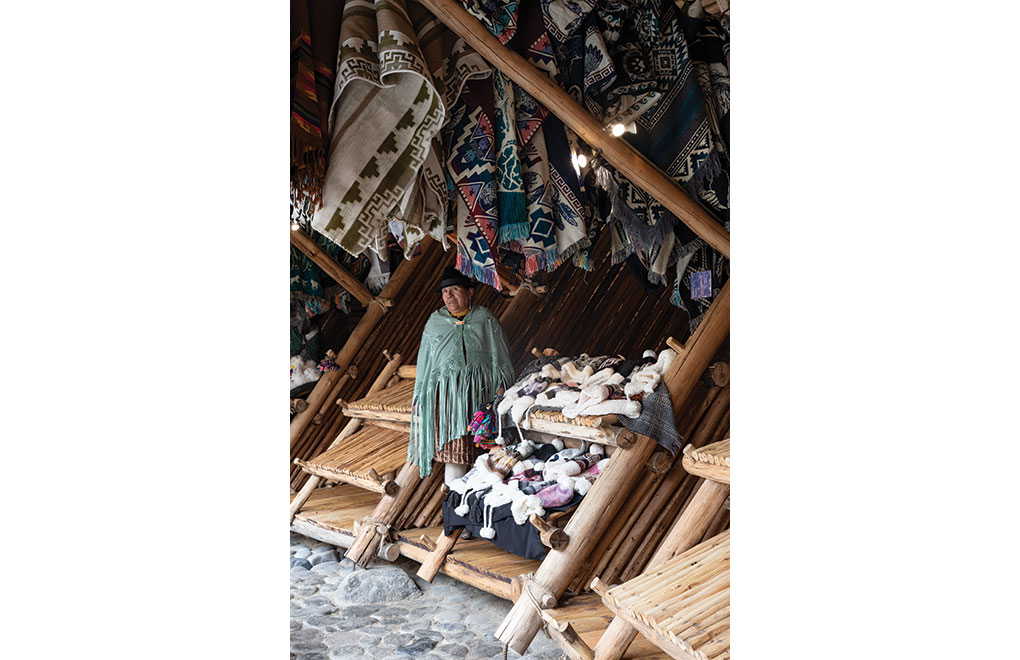Project Overview
Situated in the indigenous Shalala community, the handcrafted "Chaki Wasi" center showcases traditional Andean architecture. Constructed using local materials such as river stones, eucalyptus, and thatched roofs, the center preserves ancestral building techniques and fosters community cooperation. By generating tourism income, the project contributes to the economic empowerment of the community while respecting cultural and environmental values.
Project Details
General Information
It is a town located in the Quilotoa Lagoon, in a volcanic crater with turquoise water, the indigenous community of Shalalá promotes sustainable tourism, in symbiosis with nature, enhancing and magnifying it.
They have a wooden lookout that intensifies the experience with the lagoon, and now they have a handicraft center. The aspiration of the center is the representation of the Andean culture through traditional vernacular techniques and is an educational support to show a way of living in the Andean landscape.
The handicraft center is called Chaki Wasi, its meaning in Kichwa is a thatched house from the floor up. It is a construction with foundations in river stones, the structure is made of Eucalyptus wood tied with cabuya and supported with large chaklla dowels (small wood). The hammer to nail the dowels was a large wooden mallet made in situ. All the fastenings are made with intensely repeated chakllas and the large thatchedlarge, thatched roof is made of straw.
The beneficiaries are 24 indigenous families, thus strengthening their economic income, which is so precarious in this area of the country.
Creative Solution (Creativity/Innovation)
It is an architecture that makes readings of reality, with aesthetics of the territory, the materiality is the honesty of doing with what we have in the landscape, since they are our own resources. It is the intelligence of doing with the materials of the land and alsoand that it was worked from the craftsmanship, with the manual work, from the know-how, dominating and working the material. The tectonics of the processes determined its resolutions. The aesthetics is contained by cultural facts that reinforce the identity of the people, rooting their belonging with the place, with their customs and traditions.
Social Impact (Inspiration/Impact)
The project will generate a source of economic income from community tourism. It was an experience of cooperative work, from the participatory design, to see the commitment of everyone contributing into the community assemblies, to the manual work they do to achieve what they propose in infrastructure. We understood the importance of working on their own culture and the recognition of the territory where they live, and to transmit to the next generations from the customs and rituals. Democratic, social and welfare spaces that improve the quality of life of the inhabitants.
Participation/Cooperation
It is a construction with community logics; those in charge rotated week by week. We worked with permanent mingas between women, men and young people. In order toTo obtain the chaklla and straw, there were interesting links between communities. Everything was built by hand, with small tools, and the placement and lifting of the structural modules was done with the strength of all. At the time of laying the thatch there was transmission of vernacular knowledge and we celebrated each stage according to the culture.
Vision for the Future
It contributes to the logic of the common good, the strengthening of a community and collective empowerment through cultural and territorial meanings. With a view to a future that recognizes the power of nature and the power of living in symbiosis with other beings.
It is essential to question the current urban constructive logics, we deserve healthy environments that promote personal and social growth.
The project combats the multiple world crises;crises, The cultural crisis and a disappearance of community and environmental logics. The liquid waste crisis. The waste crisis.









